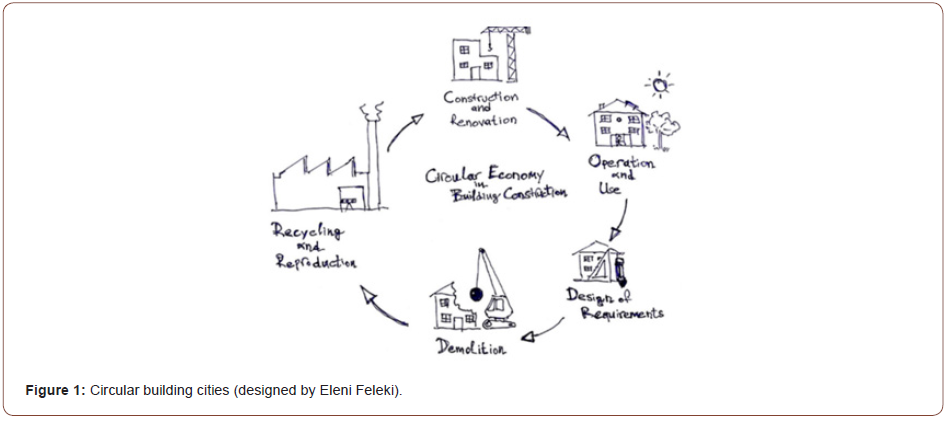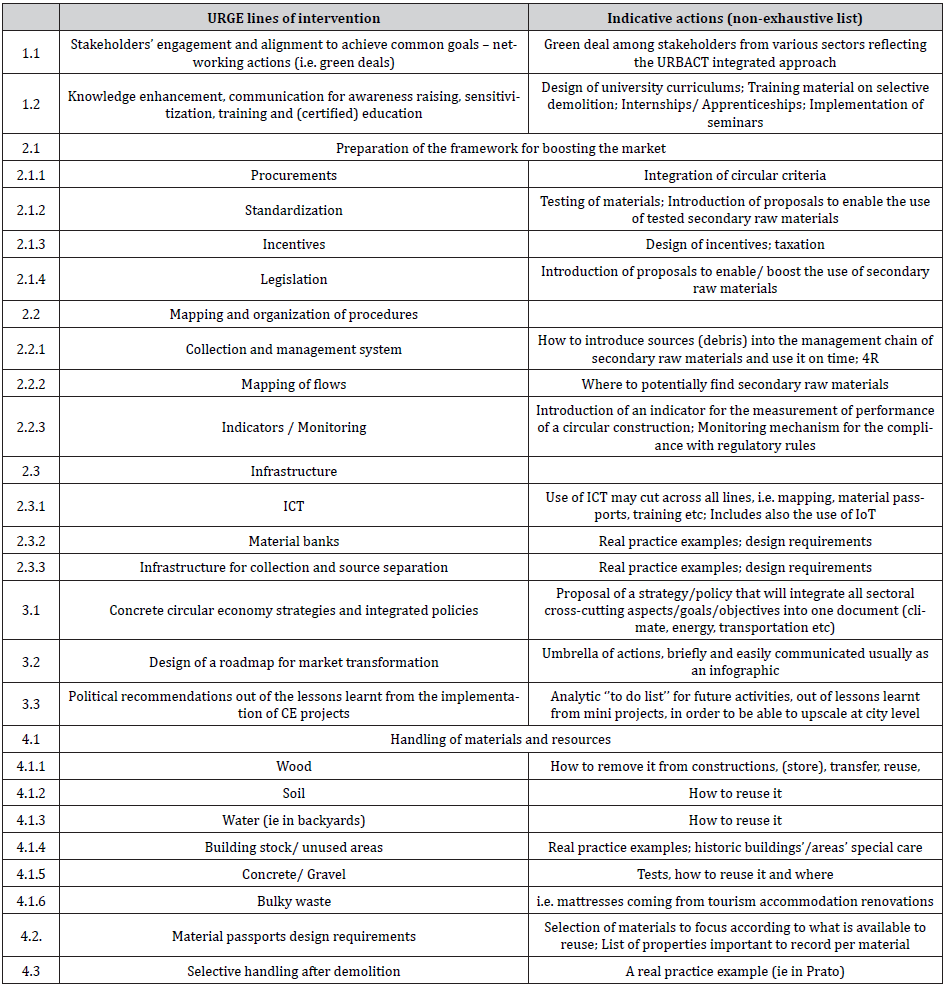Authored by Eleni Feleki*,
Abstract
What is the contribution of circular economy in the effort to meet Paris agreement and slow down global warming? How circular is our planet, and which is the circularity gap in order to meet the Paris agreement? What is the role of cities in circular green transformation? This short communication communicates briefly finding of the URGE: Circular Building Cities Network that is financed by the URBACT programme, aiming to promote the role of cities in boosting circularity, specifically in the construction sector.
Introduction
Over the past decades, humanity has breached two major milestones: the world is consuming 100 billion tons of materials and it is 1-degree warmer. That raises the fact that unsustainable practices, processes, and behaviours are put forward and global warming shows no signs of slowing. Even if all the countries that pledged climate action as part of the Paris Agreement are consistent with their emissions-cutting promises, the rise in temperatures is still forecast to hit 3.2-degrees this century [1].
What is the contribution of circular economy in the effort to meet Paris agreement and slow down global warming?
According to the Circularity Gap Report, we need to reach approximately an average of 18% circularity rate, to limit global warming to well below 2-degrees. To date, the world is only 8.6% circular. That means only 8.6% of the materials we use are cycled back into the economy, leaving a massive Circularity Gap. In 2018, the world was 9.1% circular, which shows that although we need to roughly double the circularity rate, the trend is going down [2]. Construction is one of the sectors that offers the ground for transformational change towards a greener economy.
The URGE Project
The URGE (Circular Building Cities) project, approved in the frame of URBACT III Action Planning Networks (APNs), support cities to design action plans that aim to boost circularity in the building sector. URGE is thus accelerating the transition to a circular economy and contributes to the raise of the circularity rate with all positive impacts that this brings [3].
The URGE Network is consisting of large cities such as Copenhagen and Munich, medium-sized cities such as Utrecht and Riga and smaller cities such as Maribor (represented by Nigrad), Kavala and Comunidade Intermunicipal do Oeste, a regional cooperation of smaller municipalities. The project is led by the City of Utrecht.
The project follows the intervention logic model towards the design and testing of the action plans. An integrated approach is used that supports and enhances the participation of local stakeholders from the quadruple helix: local, regional, national authorities, industry, academia, and citizens/NGOs. Local stakeholders receive knowledge and witness experiences of the participating cities, available through well designed, structured transnational exchanges. The transnational and local exchanges are built around common themes of focus that have been identified between the partner organizations. The themes of focus are: 1. Human resources 2. Methods and infrastructure 3. Governance and 4. Materials and Resources. The lines of intervention reflecting each theme of focus are presented in Table 1 (Figure 1, Table 1).

Table 1: URGE lines of intervention.

Findings
Holistic approach and integration of the views in local action planning to meet the ambitious EU goals on circularity, is the key. The transition to the circular economy needs to be systemic, deep and transformative, in the EU and beyond. A lot of action will be needed to be taken at local level raising the importance of adopting an integrated approach; an alignment and cooperation of all stakeholders at all levels - EU, national, regional, territorial, and also requires both hard and soft investments and exploitation of different funding mechanisms. At local level, silos between departments need to be broken; this is the best solution to avoid one-sided policy making. Furthermore, circular economy should be a regular theme in citizens’ dialogues. This will help cities to identify and prioritize actions that would create the most important impact. In this multi-criteria process towards prioritization of actions additional criteria, i.e., negative effects to the environment, cost, social acceptability could be considered. The prioritization of actions at local level, to result hierarchized lists of interventions accelerating the implementation of the Green Deal and the transition to circular economy, represents a future challenge for the cities [4].
A common success factor in circular building design is stakeholder engagement from the very beginning. Early co-design processes with end-users, technicians, suppliers and communities, taking everyone’s needs into consideration, therefore resulting in a more holistic design, as well as creating the foundation for future support is important.
Moreover, public procurement regulation can be a powerful driver which can play a significant role in mainstreaming circularity practices. In terms of knowledge, finished building projects and reuse of buildings and areas are well positioned for further awareness raising and experience sharing.
Influencing and adopting legislation towards the increase of use of secondary raw materials, is very critical. However, this cannot be done if relevant technical standards are not in place. Additionally, while ensuring SRMs’ performance and safety, incentives towards rewarding professionals, based on their increased sustainability performance, must be promoted. Through complementary legislative, standardization proposals and provision of incentives, cities will be the pioneers to the wider public and will pave the way to the creation of new business models [5].
Additionally, communication of public data through city portals, including the discussion and open data in relations to indicators is a powerful tool towards the engagement and motivation of related stakeholders including citizens. An open knowledge and competence building portfolio, comprised of training pack, indicators, data, good practices, integrated with specific tools’ application guides, could enhance the implementation of circular economy principles at local level. All that would not be effectively realised if not integrated within a holistic roadmap for urban resources management.
These topics have been raised and discussed among the partners of the URGE APN project. A lot is about to come, in order to fully exploit opportunities and really make use of this strategic sector as an enabler to meet circularity objectives and goals at local and EU level in compliance with the European Green Deal [6].
More information, case studies of the participating cities, informative material and technical articles are available in the project website.
To read more about this article...Open access Journal of Civil & Structural Engineering
Please follow the URL to access more information about this article
https://irispublishers.com/ctcse/fulltext/circular-economy-in-the-building-sector-experience-from-the-urge-circular-building-cities-action-planning-network.ID.000689.php
To know more about our Journals...Iris Publishers
To know about Open Access Publishers





No comments:
Post a Comment